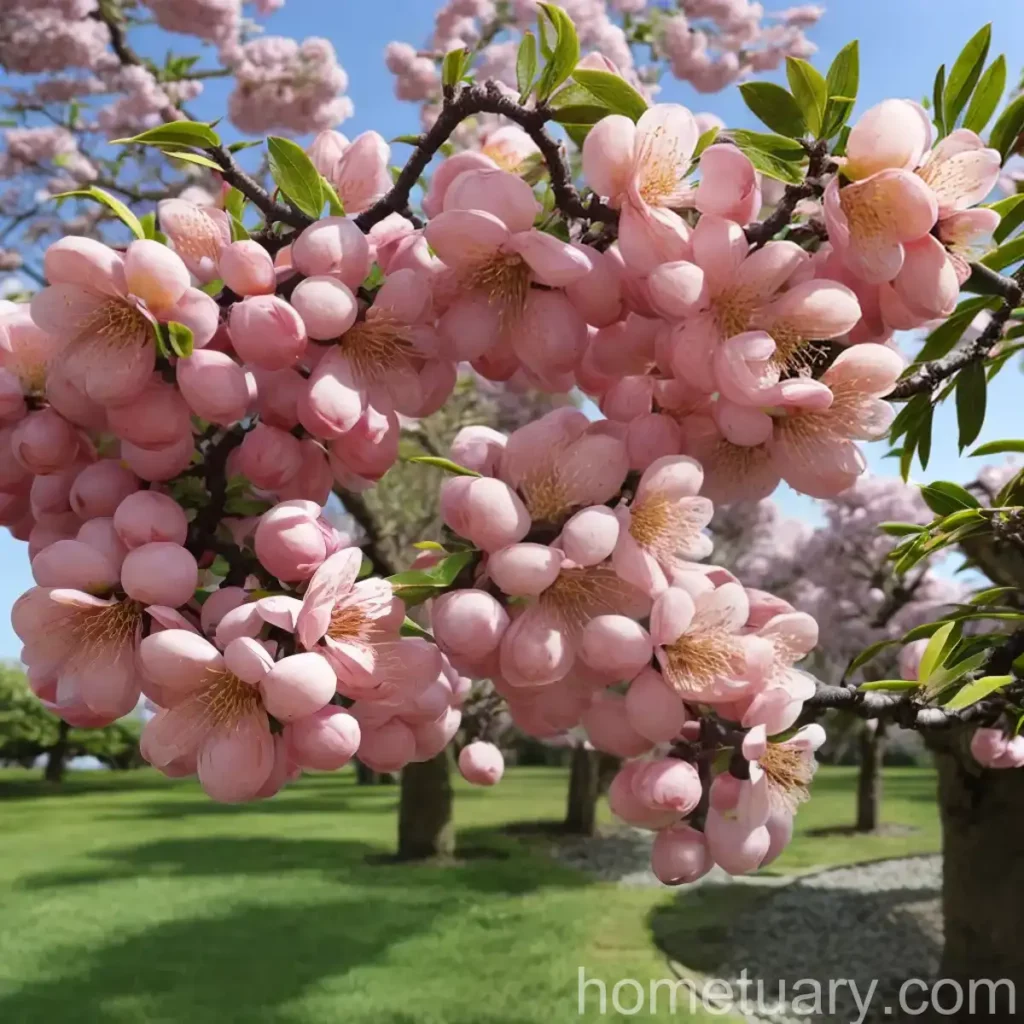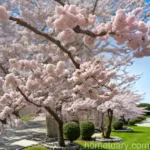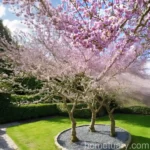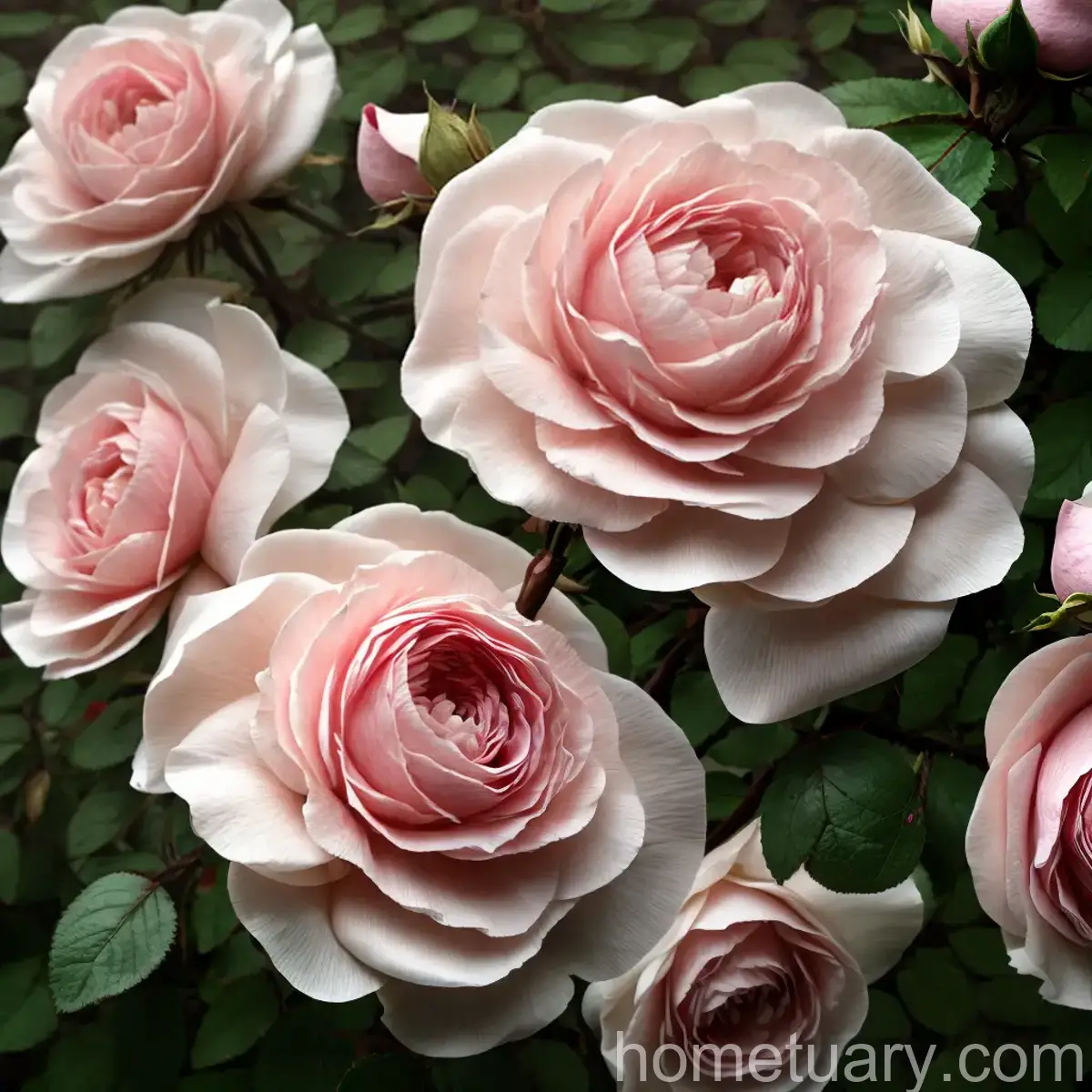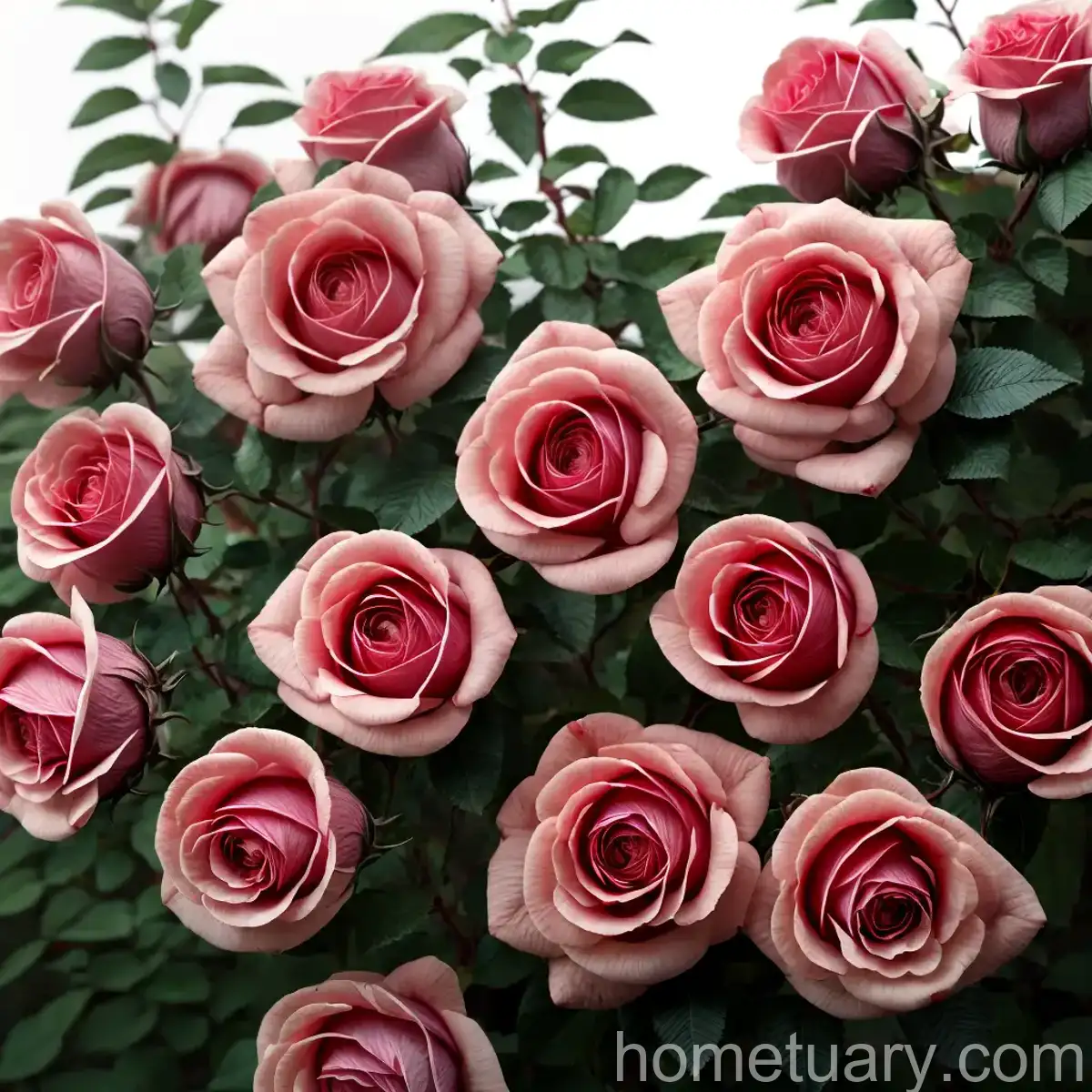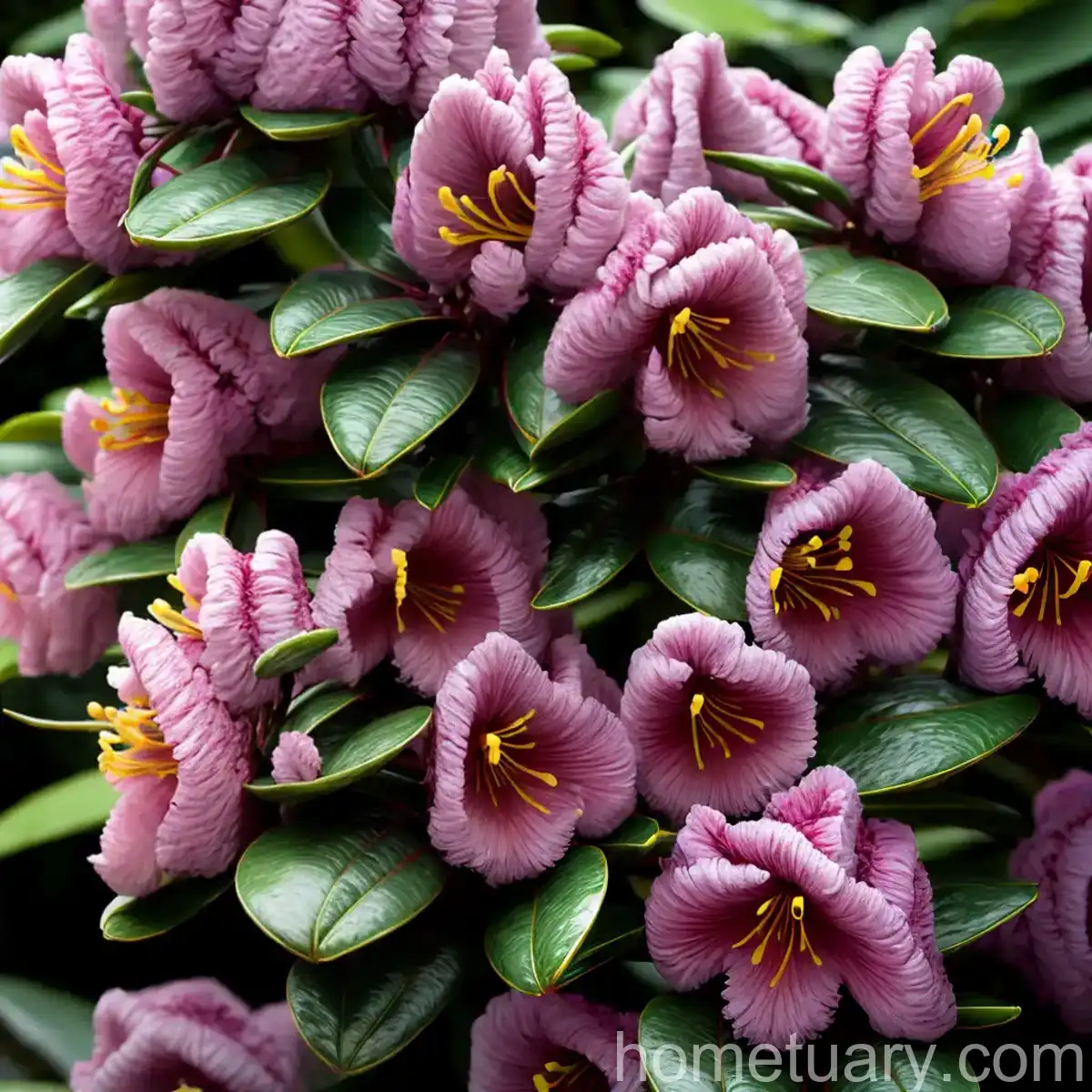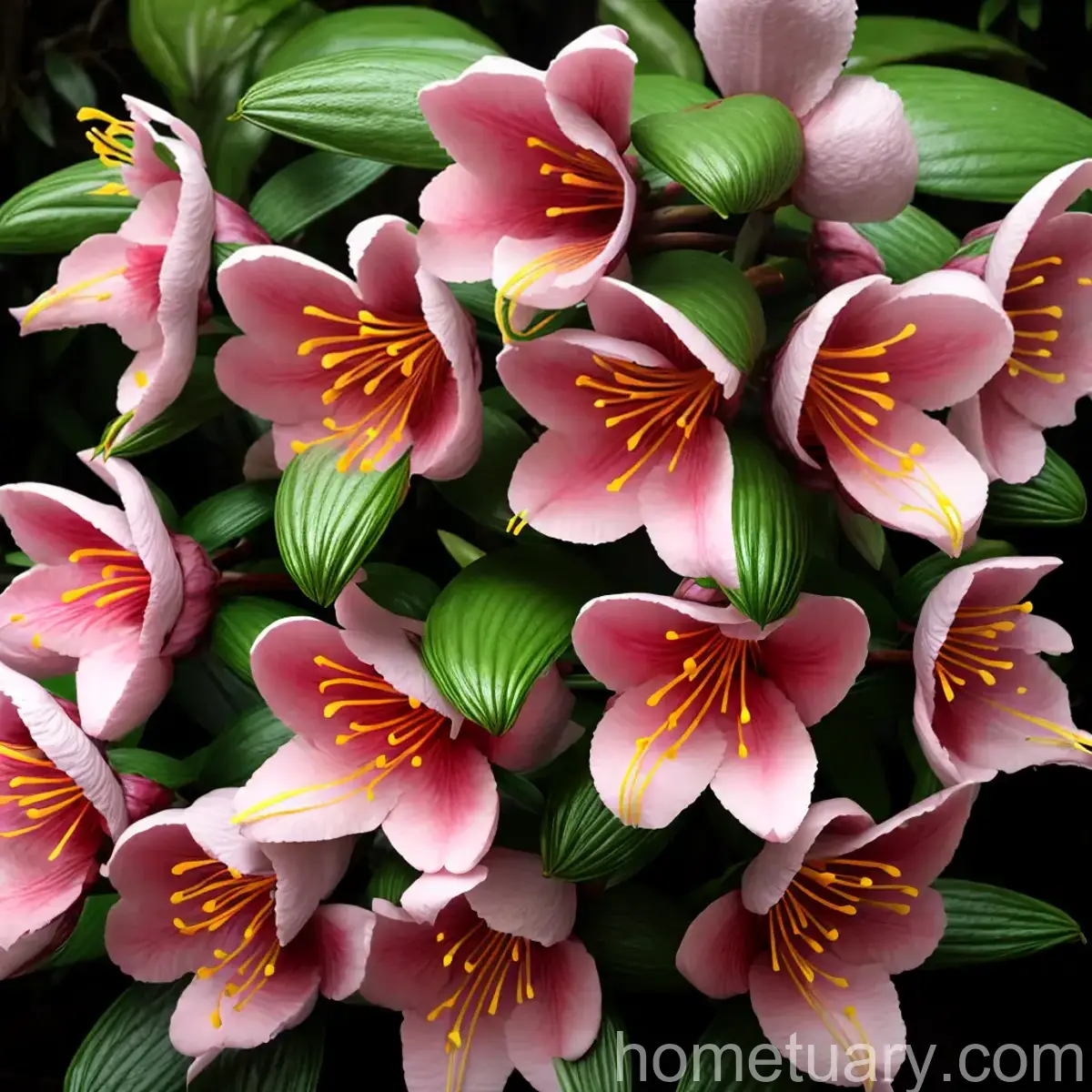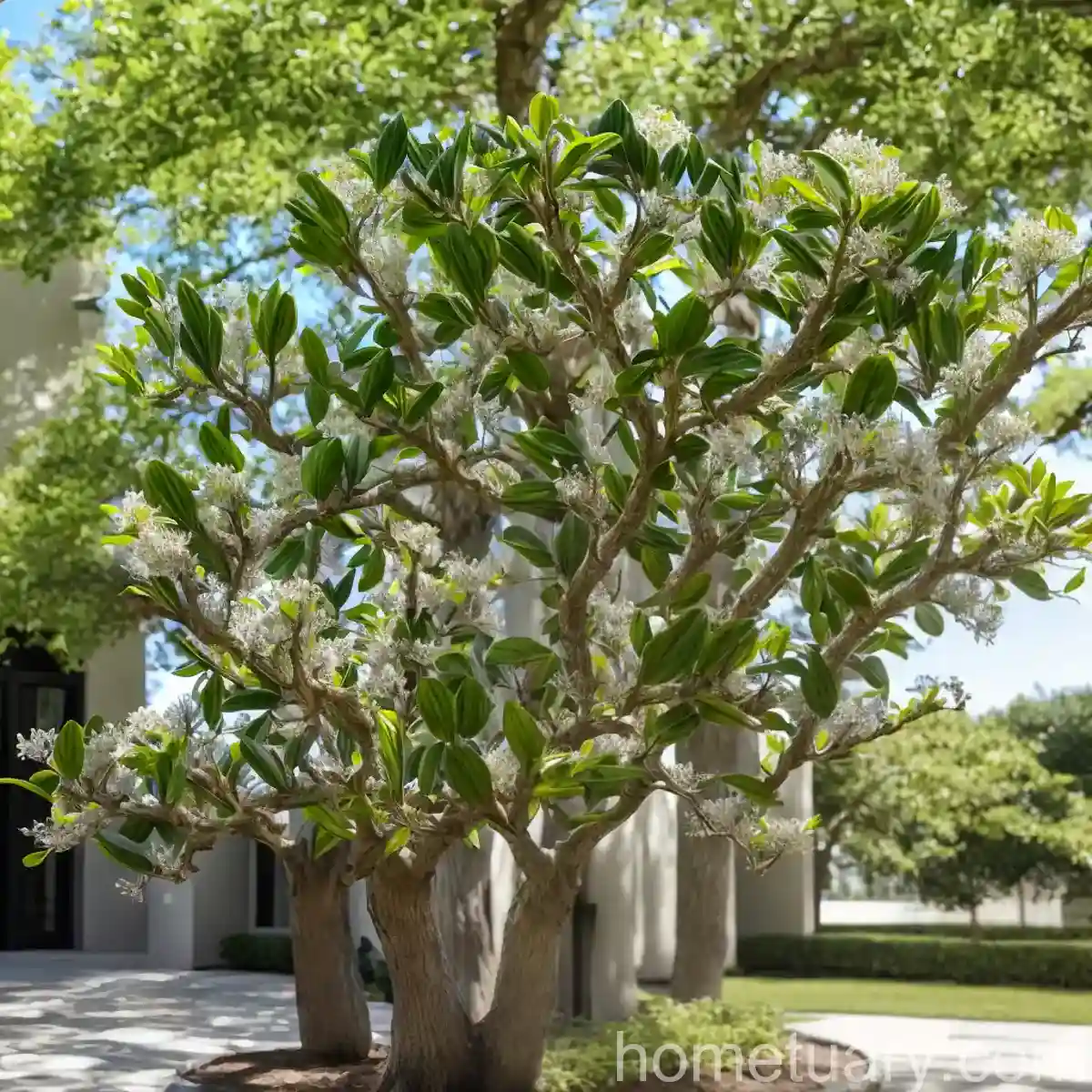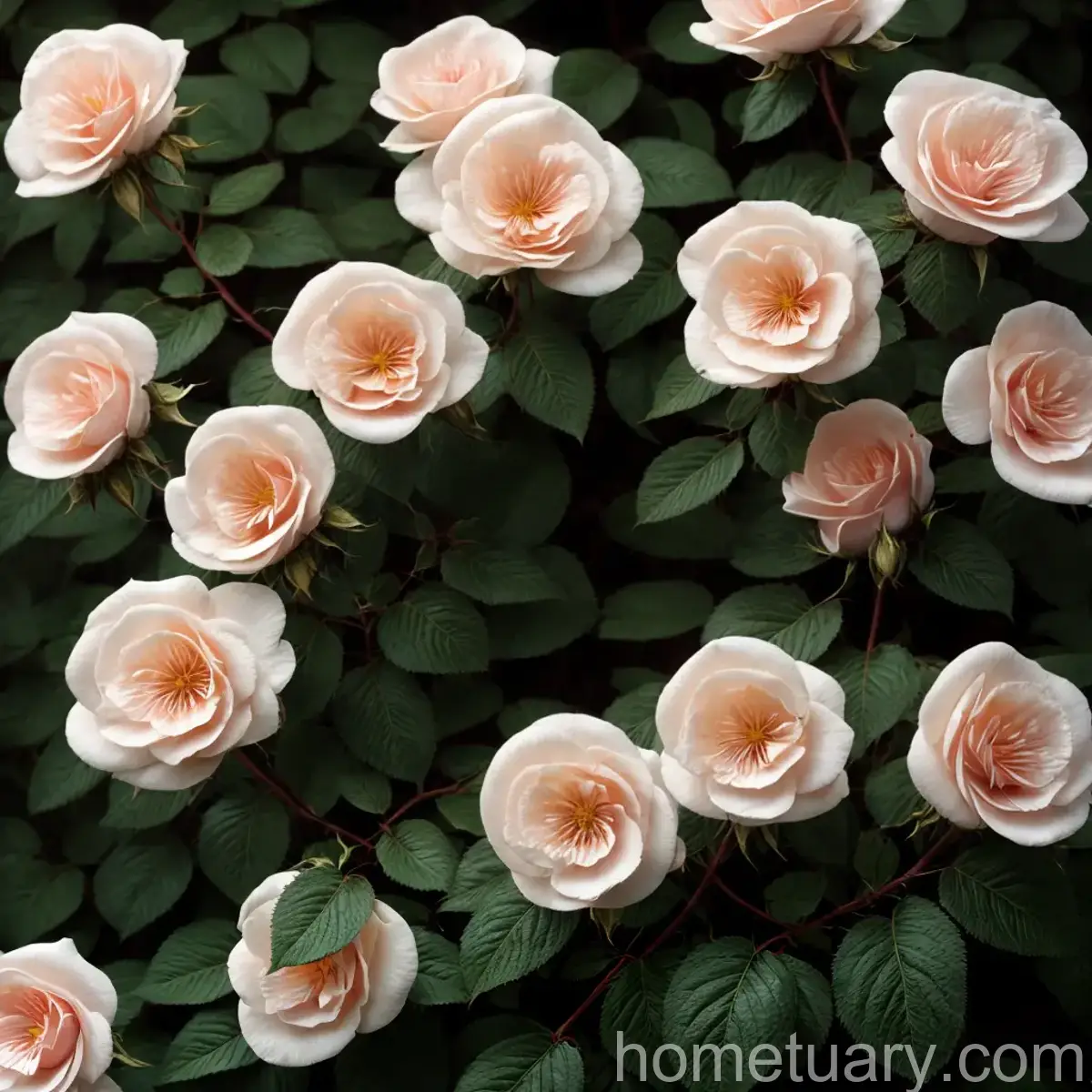Chinese Plum (Prunus glandulosa)
The Chinese plum, scientifically known as Prunus glandulosa, is a captivating and aesthetically pleasing addition to any garden or landscape. With its delicate pink blossoms, this beautiful flowering plant is a popular choice for gardeners and horticulturists alike. The Chinese plum belongs to the Prunus genus and is native to China, where it has been cultivated for centuries for its ornamental value and, to some extent, its fruits.
In this comprehensive guide, we will delve into the culture, uses, and maintenance of the Chinese plum, including tips for successful cultivation, propagation, and pest management. Whether you are a seasoned gardener or a beginner looking to enhance your green space, this article will equip you with the knowledge and skills to grow and care for the Chinese plum effectively.

Key Takeaways – Chinese Plum (Prunus glandulosa)
Before we venture into the specifics of cultivating and caring for the Chinese plum, let’s highlight some key takeaways about this captivating plant:
- Botanical Name: Prunus glandulosa
- Common Names: Chinese plum tree, Chinese flowering plum, Dwarf flowering almond
- Plant Type: Deciduous shrub, Ornamental tree, Flowering fruit tree
- Origin: Native to China
- Cultural Significance: Popular garden plant, garden staple in Chinese horticulture
- Aesthetic Features: Beautiful blooming tree, compact flowering tree, eye-catching landscape plant
- Fruit Qualities: Small fruiting tree, fragrant garden addition, fruit-bearing tree
- Adaptability: Cold-hardy fruit tree, low maintenance plant, colorful spring display
- Landscape Utility: Attractive garden tree, flowering landscape tree, ornate garden feature
- Taxonomic Classification: Belongs to the Prunus genus, a member of the Rosaceae family
Now that we have a glimpse of the Chinese plum’s attributes, let’s explore the cultural requirements and maintenance practices necessary for its successful growth and development.
Culture
Cultivating the Chinese plum requires an understanding of its cultural needs, including water, sunlight, fertilizer, soil, and pruning requirements. By providing the right growing conditions and adhering to best practices, you can ensure the robust growth and abundant flowering of this ornamental tree.
Water
- Watering Frequency: The Chinese plum thrives in moist but well-drained soil. During the growing season, ensure that the plant receives consistent moisture, especially during dry spells. However, avoid waterlogging the soil, as it can lead to root rot.
- Establishment Period: Newly planted Chinese plum trees require regular watering to aid in root establishment. Water deeply at least once a week, especially during hot weather or drought conditions.
- Winter Watering: In regions with cold winters, it is essential to water the tree adequately before the ground freezes. This ensures that the roots have ample moisture to sustain the plant throughout the winter months.
Sunlight
- Optimal Sun Exposure: The Chinese plum performs best in full sun to partial shade. Ensure that the plant receives at least 6-8 hours of direct sunlight daily for prolific flowering and overall vigor.
- Shade Tolerance: While the plant prefers ample sunlight, it can tolerate some shade, particularly in regions with intense afternoon sun or high temperatures.
Fertilizer
- Nutrient Requirements: The Chinese plum benefits from regular fertilization to support healthy growth and flowering. Use a balanced fertilizer with a higher phosphorus content to promote blooming.
- Application Timing: Apply fertilizer in early spring before new growth emerges. Additionally, a light application in late fall can help sustain the tree’s nutritional needs through the winter.
Soil
- Soil Type: Well-draining, fertile soil is ideal for the Chinese plum. A slightly acidic to neutral pH range (pH 6.0-7.0) is optimal for robust growth and nutrient uptake.
- Soil Amendment: Prior to planting, incorporate organic matter such as compost or well-rotted manure into the soil to improve its structure and fertility.
Pruning
- Pruning Time: Prune the Chinese plum tree in late winter to early spring while it is dormant. This allows for shaping the tree, removing dead or diseased wood, and encouraging new growth in preparation for the blooming season.
- Pruning Technique: Use sharp, clean pruning tools to make precise cuts. Remove any crossing or inward-growing branches to enhance air circulation and overall plant health.
Uses
The Chinese plum offers a range of uses, making it a versatile and appealing addition to diverse landscapes and garden settings. From its ornamental value to its cultural significance, this plant contributes to both visual aesthetics and practical applications.
Aesthetic Appeal
- Ornamental Feature: The Chinese plum is valued for its striking display of delicate pink or white blossoms, which adorn the tree in early spring.
- Landscape Enhancement: Whether planted as a standalone specimen, in small groupings, or as part of a mixed border, the Chinese plum adds an exquisite touch to any landscape.
- Seasonal Interest: The profusion of blossoms in spring and the attractive foliage in summer make this plant a captivating seasonal performer.
Fruit Production
- Edible Fruits: While the Chinese plum is primarily grown for its ornamental value, it does produce small, edible fruits that are sometimes used in jams, jellies, or as flavorings.
- Wildlife Attraction: The fruits attract birds and small wildlife, adding biodiversity to the garden ecosystem.
Cultural Significance
- Traditional Symbolism: In Chinese culture, the plum blossom holds deep cultural significance and is revered as a symbol of resilience, endurance, and beauty. The Chinese plum tree is a cherished icon in Chinese art, poetry, and folklore.
Propagation
The propagation of the Chinese plum can be achieved through several methods, including seeds, cuttings, and grafting. Each technique offers distinct advantages and considerations, allowing gardeners to select the most suitable approach based on their resources and expertise.
Seed Propagation
- Seed Collection: Collect ripe fruits from the Chinese plum tree and extract the seeds from the fleshy pulp. Clean the seeds thoroughly and allow them to air dry for a few days before storage.
- Seed Treatment: To break dormancy and enhance germination, consider stratifying the seeds by placing them in a moist, chilled environment for a specified period before sowing.
Cuttings
- Softwood Cuttings: Take softwood cuttings in late spring or early summer from the current season’s growth. Root the cuttings in a well-draining medium under controlled environmental conditions, such as a misting system or a propagator.
- Hardwood Cuttings: Harvest hardwood cuttings in late winter when the tree is dormant. These cuttings require a more extended rooting period but often result in robust, well-established plants.
Grafting
- Scion Selection: Choose healthy, disease-free scion wood from a desirable Chinese plum cultivar and graft it onto a compatible rootstock using the preferred grafting method, such as whip grafting or T-budding.
- Grafting Considerations: Grafting is an effective means of preserving specific cultivars and traits, ensuring genetic uniformity, and controlling the tree’s ultimate size and vigor.
Container Popularity
The Chinese plum’s compact growth habit and exquisite blossoms make it a sought-after choice for container gardening. Whether on patios, balconies, or small urban spaces, this ornamental tree brings elegance and seasonal beauty to containerized environments.
Container Requirements
- Container Size: Select a spacious container that accommodates the tree’s root system and allows for adequate drainage. A larger container also provides stability and reduces the need for frequent repotting.
- Drainage: Ensure that the container has drainage holes to prevent waterlogging, which can be detrimental to the tree’s root health.
- Growing Medium: Use a well-draining potting mix formulated for woody ornamentals. Consider adding perlite or coarse sand to improve aeration and moisture retention.
Container Care
- Watering: Containerized Chinese plum trees may require more frequent watering, especially during hot and dry periods. Check the soil moisture regularly and water when the top inch of the soil feels dry to the touch.
- Fertilization: Apply a balanced liquid fertilizer at half-strength during the growing season to supply essential nutrients to the tree.
Design Accent
- Architectural Element: Use containerized Chinese plum trees to add vertical interest, create focal points, or frame outdoor living spaces.
- Seasonal Display: Enjoy the beauty of the Chinese plum’s blossoms up close by placing containers in prominent locations, such as entryways or outdoor seating areas.
Common Diseases
As with many ornamental plants, the Chinese plum is susceptible to certain diseases that can affect its overall health and vigor. Understanding the common ailments and their management is crucial for maintaining the tree’s vitality and beauty.
Blossom Blight
- Causal Agent: Blossom blight is often caused by fungal pathogens such as Monilinia laxa or Monilinia fructigena.
- Symptoms: Infected blossoms display browning, wilting, and the development of gray mold. In severe cases, the entire blossom cluster may be affected.
Leaf Spot
- Pathogens Involved: Various fungi, including species of Cercospora and Septoria, can cause leaf spot on Chinese plum trees.
- Signs of Infection: Leaf spots appear as small, dark lesions on the foliage, leading to premature leaf drop and reduced aesthetic appeal.
Powdery Mildew
- Fungal Attack: Powdery mildew, caused by species within the Erysiphaceae family, results in a conspicuous powdery white growth on the leaves and young shoots.
- Impact: Severe powdery mildew infections can hinder photosynthesis and overall plant vigor.
Prevention and Management
- Cultural Practices: Promote good air circulation through proper spacing and pruning to reduce humidity and minimize disease-friendly conditions.
- Sanitation: Promptly remove and dispose of affected plant parts to prevent the spread of pathogens.
- Fungicidal Treatments: Apply fungicides as a preventive measure or at the first signs of disease to protect the tree from further infection.
Disease Diagnosis
Accurately diagnosing diseases is essential for implementing targeted and effective management strategies. When observing abnormal symptoms on the Chinese plum tree, consider the following diagnostic steps to identify potential diseases and initiate appropriate measures.
- Visual Inspection: Carefully observe the affected plant parts, noting any discoloration, lesions, or abnormalities on the leaves, stems, or blossoms.
- Symptom Comparison: Compare the observed symptoms with diagnostic resources, such as online plant pathology databases, extension publications, or reference books, to narrow down the possible diseases.
- Laboratory Analysis: In cases where the symptoms are ambiguous or widespread, consider sending samples to a diagnostic laboratory for pathogen identification and confirmation.
- Consultation: Seek expert advice from local plant health professionals, including horticulturists, plant pathologists, or agricultural extension agents, for accurate diagnosis and management guidance.
Common Pests
While the Chinese plum is relatively resilient to pest infestations, several common garden pests may occasionally target the tree, causing damage to foliage, blossoms, or fruits. By recognizing these potential pests and implementing integrated pest management strategies, you can safeguard the vitality of the Chinese plum.
Aphids
- Impact: Aphids feed on the sap of the Chinese plum tree, leading to distorted growth, yellowing leaves, and the secretion of honeydew, which attracts ants.
- Natural Predators: Encourage the presence of natural predators such as ladybugs, lacewings, and parasitic wasps to control aphid populations.
Scale Insects
- Identification: Scale insects appear as immobile, waxy bumps on the stems and branches of the Chinese plum. They can cause weakened growth and honeydew secretion, leading to sooty mold development.
Caterpillars
- Defoliation Damage: Certain caterpillar species, including tent caterpillars and leaf rollers, may feed on the foliage of the Chinese plum, leading to defoliation and aesthetic impairment.
Pest Management
- Monitoring: Regularly inspect the tree for signs of pest activity, such as honeydew, distorted growth, or the presence of the pests themselves.
- Mechanical Control: Prune and destroy heavily infested plant parts, such as aphid-infested shoots or scale-covered branches, to reduce pest numbers.
- Biological Control: Introduce beneficial insects or predatory species to help manage pest populations in an eco-friendly manner.
Botanist’s Tips
As a plant scientist specializing in ornamental trees, I would like to share some valuable tips for successfully growing and enjoying the Chinese plum in your garden or landscape. These insights are based on scientific knowledge and practical experience, aiming to enhance your understanding of this remarkable plant and optimize its cultivation.
Seasonal Care
- Prune Wisely: When pruning the Chinese plum, focus on removing dead, damaged, or disease-prone branches while preserving the framework and overall natural form of the tree.
- Spring Fertilization: Apply a balanced, slow-release fertilizer in early spring to provide essential nutrients for robust growth and prolific flowering.
- Mulching Benefits: Mulch the soil around the base of the tree with organic matter to conserve moisture, suppress weeds, and insulate the roots from temperature fluctuations.
Pest Vigilance
- Early Intervention: Address pest infestations promptly to prevent widespread damage and mitigate the potential for secondary issues, such as disease development.
- Beneficial Insects: Encourage a diverse and thriving ecosystem in your garden to attract natural predators that help maintain pest populations at manageable levels.
Aesthetic Considerations
- Complementary Planting: Pair the Chinese plum with spring-blooming bulbs, perennials, or other flowering shrubs to create captivating combinations and extend the visual appeal of the landscape.
- Structural Contrast: Balance the delicate beauty of the Chinese plum with structures, hardscapes, or evergreen plants to create visual interest and year-round appeal.
Fun Facts
To further appreciate the allure and cultural significance of the Chinese plum, let’s explore some delightful and intriguing fun facts about this captivating plant:
- Cultural Symbolism: In Chinese art and literature, the plum blossom symbolizes resilience, endurance, and the arrival of spring, making it a cherished emblem of fortitude and hope.
- Aromatic Blooms: The blossoms of the Chinese plum emit a delicate, sweet fragrance, enhancing the sensory experience of witnessing their spectacular display.
- Artistic Inspiration: The exquisite form and color of the plum blossoms have inspired renowned artists and poets throughout Chinese history, contributing to the enduring cultural significance of the tree.
- Seasonal Festivals: In China and other East Asian countries, the blooming of plum trees heralds the arrival of spring and is celebrated through traditional festivals and cultural events.
- Antiquity of Cultivation: The Chinese plum has been cultivated and revered in China for over a millennium, attesting to its enduring popularity and significance in Chinese horticulture.
Links to External Resources
To expand your knowledge and explore additional information about the Chinese plum (Prunus glandulosa), I have curated a selection of reputable and informative external resources that offer valuable insights and practical guidance on this captivating ornamental tree:
- The Plum Blossom in Chinese Art and Culture
- Prunus glandulosa – University of Florida Extension
- Introduction to the Rosaceae Family
- Chinese Plum Cultivation and Symbolism
As you delve into these resources, you will gain a deeper appreciation for the Chinese plum’s rich cultural heritage, botanical characteristics, and practical cultivation guidelines.
In conclusion, the Chinese plum (Prunus glandulosa) stands as a testament to the enduring allure of ornamental trees and the profound cultural symbolism of flowering plants. By embracing the cultural significance, aesthetic beauty, and practical uses of the Chinese plum, gardeners and enthusiasts can cultivate and cherish this remarkable tree, fostering a deeper connection to horticulture and the natural world.
Thank you for joining me on this exploration of the captivating Chinese plum. May the delicate blossoms of this extraordinary tree inspire and enrich your gardening endeavors.

This blog post was created by a passionate plant scientist with a commitment to sharing knowledge and fostering appreciation for the botanical world. For inquiries or additional information, please contact Botanic Splendor.

